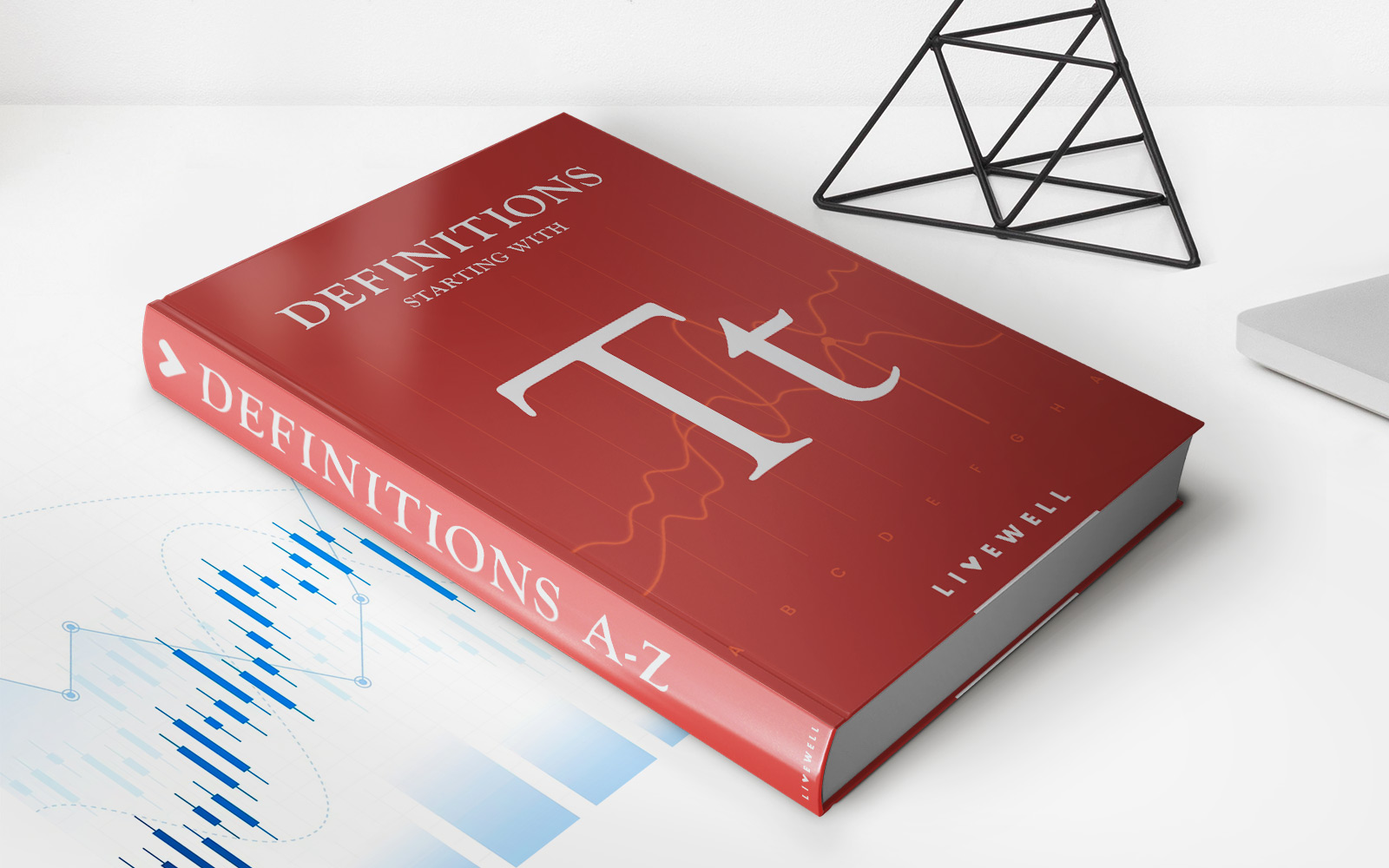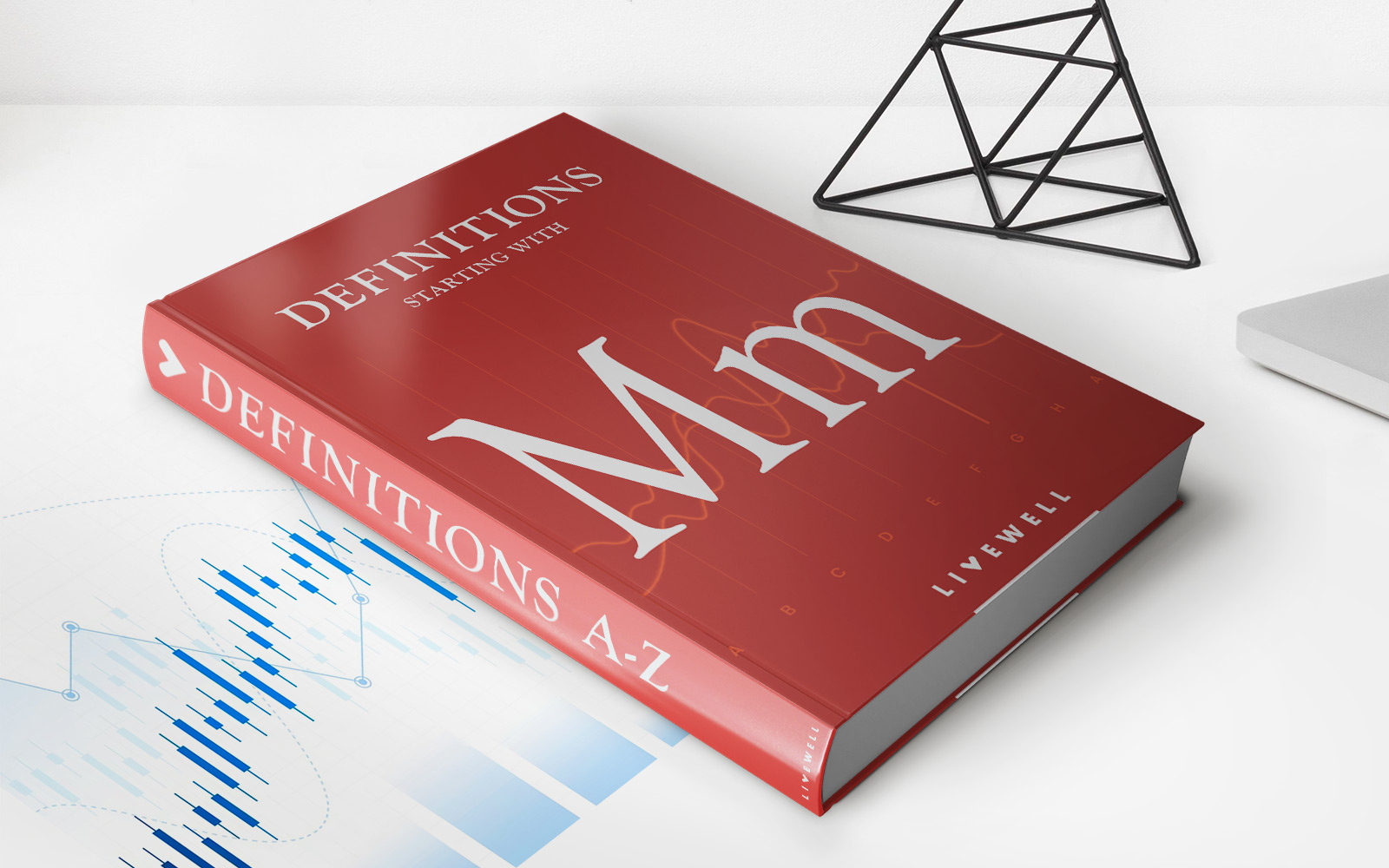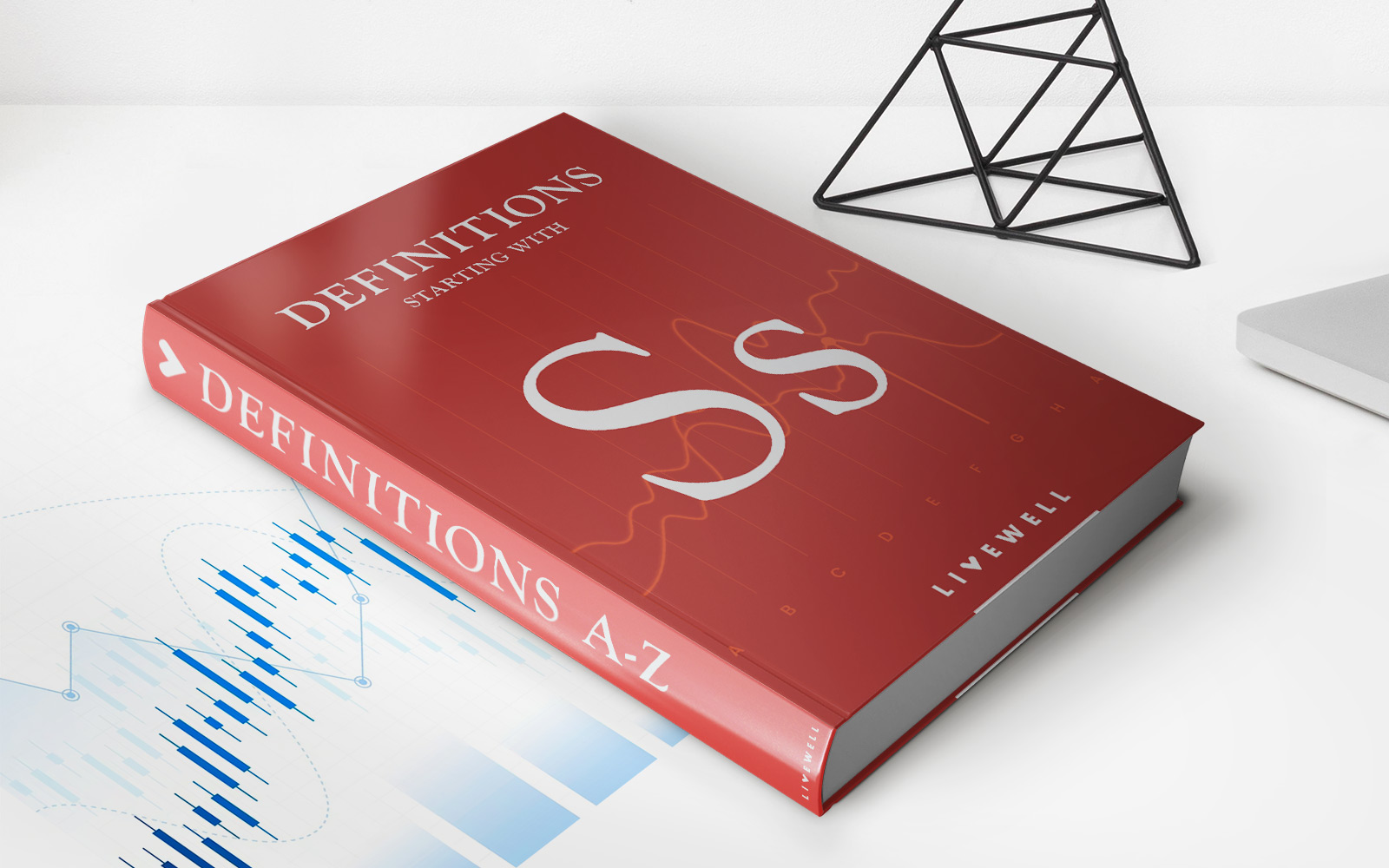Home>Finance>How Can You Relate Dividend Payout To The Capital Structure Of A Company?


Finance
How Can You Relate Dividend Payout To The Capital Structure Of A Company?
Modified: December 30, 2023
Discover how the dividend payout relates to a company's capital structure in finance. Explore the impact of dividends on funding and investment decisions.
(Many of the links in this article redirect to a specific reviewed product. Your purchase of these products through affiliate links helps to generate commission for LiveWell, at no extra cost. Learn more)
Table of Contents
Introduction
Welcome to the world of finance, where the dynamics of companies’ capital structures and dividend payouts play a vital role in shaping their financial health. As an investor or someone interested in finance, understanding the relationship between dividend payouts and capital structure is crucial for making informed decisions.
Dividend payout refers to the distribution of a company’s earnings to its shareholders in the form of dividends. On the other hand, capital structure refers to the composition of a company’s financial resources, such as debt, equity, and retained earnings.
In this article, we will delve into the intricacies of dividend payouts and capital structure and explore how they are interconnected. We will analyze the factors that influence dividend payouts and how they impact a company’s capital structure. Additionally, we will provide real-world examples and case studies to illustrate these concepts.
By the end of this article, you will have a comprehensive understanding of the relationship between dividend payouts and capital structure and its implications for both investors and companies.
Understanding Dividend Payout
Dividend payout is a crucial aspect of a company’s financial management strategy. It refers to the amount of earnings or profits that a company distributes to its shareholders in the form of dividends. Dividends are often paid out in cash, but they can also be distributed as additional shares of stock or other forms of assets.
Companies typically pay dividends as a way to share the profits generated with their shareholders. Dividends are a way to reward investors for their ownership in the company and can serve as a signal of the company’s financial health and stability.
The decision to pay dividends and the amount to be paid are determined by the company’s board of directors. They take into consideration various factors such as profitability, cash flow, growth opportunities, and financial obligations. The decision to pay dividends is not obligatory, and not all companies pay dividends. Some companies may choose to reinvest their earnings back into the business for expansion or to pay down debts.
Dividend payout ratios are commonly used to assess how much of a company’s earnings are being distributed to shareholders. The dividend payout ratio is calculated by dividing the dividend per share by the earnings per share and expressing it as a percentage. A higher ratio indicates that a larger portion of the earnings is being distributed as dividends, while a lower ratio implies that the company is retaining a larger portion of its earnings.
Investors often consider dividend payouts when evaluating investment opportunities, particularly for income-focused portfolios. High dividend payouts can provide a steady income stream, especially for dividend growth stocks that increase their dividend payments over time. Conversely, companies with no or low dividend payouts may appeal to investors seeking capital appreciation or reinvestment opportunities.
Capital Structure of a Company
The capital structure of a company refers to the way a company finances its operations and growth by utilizing various sources of funds. These sources typically include debt, equity, and retained earnings.
Debt is a form of financing that involves borrowing money from external sources, such as banks or bondholders. This borrowed money must be repaid with interest over a specified period of time. Debt allows companies to leverage their operations, potentially increasing their returns on investment. However, it also comes with the risk of higher interest expenses and debt repayment obligations.
Equity, on the other hand, represents ownership in a company. Equity financing involves selling shares of stock to investors in exchange for capital. Equity investors become shareholders and share in the company’s profits and losses. Unlike debt, equity does not require repayment, but shareholders expect a return on their investment through capital appreciation and dividend payments.
Retained earnings are the accumulated profits that a company retains and reinvests back into the business instead of distributing them as dividends. Retained earnings can be used for various purposes, such as funding growth initiatives, research and development, acquiring new assets, or paying off debt. They play a crucial role in financing a company’s operations without relying on external sources of capital.
The capital structure of a company is determined by its financial objectives, risk appetite, industry norms, and market conditions. A company’s capital structure is reflected in its balance sheet, where the proportion of debt, equity, and retained earnings is disclosed.
The optimal capital structure for a company is one that strikes a balance between utilizing debt to leverage returns while maintaining financial stability. A well-structured capital mix can help companies take advantage of growth opportunities, reduce their cost of capital, and optimize their overall financial performance.
However, it’s important to note that each company’s capital structure will vary based on its unique circumstances, such as industry dynamics, growth prospects, profitability, and risk tolerance. There is no one-size-fits-all approach to designing a capital structure, and companies must carefully consider their specific needs and objectives.
Relationship between Dividend Payout and Capital Structure
There is a close relationship between dividend payout and capital structure within a company. The capital structure of a company can influence its dividend policy, and vice versa, the dividend policy can impact the capital structure.
When a company decides to pay out dividends, it primarily relies on its available cash flow. The amount of cash available for dividends is determined by the company’s profitability, liquidity, and investment requirements. If a company has a strong cash position and consistent earnings, it may choose to distribute a larger portion of its earnings as dividends.
However, the decision to pay dividends can also be influenced by a company’s capital structure. If a company has a significant amount of debt, it may prioritize using its cash flow to meet debt obligations rather than paying dividends. This is because debt repayment is a contractual obligation and failure to meet these obligations can have severe consequences, including default and bankruptcy.
On the other hand, a company with a higher equity component in its capital structure may have greater flexibility in paying dividends. This is because equity does not carry interest payment obligations like debt does, and shareholders typically have an expectation of receiving a return on their investment.
The dividend policy of a company can also impact its capital structure. Companies that consistently pay dividends and have a track record of dividend stability and growth may attract investors and increase their attractiveness in the market. This can lead to an increase in their stock price and market value, making it easier for them to raise capital through equity offerings. As a result, the company’s capital structure may shift towards a higher proportion of equity.
Conversely, companies that do not pay dividends or have an inconsistent dividend policy may rely more on debt financing to fund their operations and growth. This can result in a higher debt-to-equity ratio and a more leveraged capital structure.
It’s important to note that the relationship between dividend payout and capital structure is not fixed and can vary based on individual company circumstances and market conditions. The strategic goals of the company, the availability of cash flow, and the preferences of investors all play a role in determining the appropriate alignment of dividend payout and capital structure.
By carefully managing the relationship between dividend payout and capital structure, companies can maintain financial stability, meet investor expectations, and pursue growth opportunities effectively.
Factors Influencing Dividend Payout and Capital Structure
Several factors influence a company’s dividend payout and capital structure decisions. These factors can vary depending on the company’s industry, financial performance, growth prospects, and investor expectations. Understanding these factors is crucial for companies to make informed decisions about their dividend policies and capital structure.
Profitability: The profitability of a company is a significant factor in determining its dividend payout and capital structure. Companies with consistent and high levels of profitability are more likely to have sufficient cash flow to support dividend payments and have more flexibility in shaping their capital structure.
Cash Flow: The availability of cash flow is a key factor in determining a company’s dividend payout. Companies with strong cash flow are more likely to have the funds necessary for regular dividend payments. Additionally, cash flow is also crucial in meeting debt service obligations, which can influence the capital structure decisions of a company.
Growth Opportunities: Companies with significant growth opportunities may choose to retain earnings rather than pay dividends to finance expansion and capital expenditure projects. These companies may prefer to reinvest their profits back into the business to fund research and development, acquisitions, or entry into new markets.
Industry Norms: Industry norms and practices can also play a role in shaping dividend policies and capital structures. Industries that are traditionally associated with stable and consistent cash flows, such as utilities or consumer staples, tend to have higher dividend payout ratios. On the contrary, industries that require significant capital investment, like technology or biotech, may retain earnings to fund future growth and have a lower dividend payout ratio.
Tax Considerations: Tax policies and considerations can impact both dividend payouts and capital structure decisions. For example, companies may be motivated to pay dividends to shareholders to take advantage of favorable tax rates on dividend income. On the capital structure side, the tax deductibility of interest payments on debt can make debt financing more attractive than equity financing.
Investor Expectations: The expectations and preferences of shareholders and potential investors can greatly influence a company’s dividend payout and capital structure decisions. Income-focused investors may prefer companies that offer consistent and growing dividends, while growth-focused investors may appreciate companies that reinvest their earnings for future expansion and capital appreciation.
Market Conditions: Market conditions and economic factors can also impact dividend payout and capital structure decisions. During periods of economic uncertainty or market downturns, companies may choose to conserve cash and reduce dividend payouts to maintain financial stability. Similarly, companies may alter their capital structure to align with prevailing market conditions, such as taking advantage of low-interest rates to issue debt or raising equity when investor sentiment is favorable.
Overall, the interplay of these factors shapes a company’s dividend payout and capital structure decisions. Companies must carefully assess these factors while considering their financial goals, risk tolerance, and shareholder expectations to strike the right balance between rewarding shareholders and maintaining a stable financial position.
Impact of Dividend Payout on Capital Structure
The dividend payout of a company can have a significant impact on its capital structure. Dividend payments affect both the equity and debt components of a company’s capital structure, influencing its overall financial health and risk profile.
When a company pays out dividends, it reduces its retained earnings, which are an essential part of the equity portion of the capital structure. This reduction in retained earnings can have implications for the company’s ability to finance future growth initiatives and investment opportunities using internal funds. Companies with higher dividend payouts may need to rely more on external sources of capital, such as issuing new equity or debt, to fund expansion and operations.
Reduced retained earnings from dividends can also impact a company’s debt-to-equity ratio. If a company’s distribution of dividends results in a decrease in retained earnings, the equity component of the capital structure decreases, potentially leading to a higher debt-to-equity ratio. This increased leverage can affect the company’s creditworthiness and increase its risk in the eyes of lenders and investors.
On the other hand, the impact of dividend payout on the debt portion of the capital structure is more indirect. When a company pays dividends, it reduces its available cash flow that could be used to service debt obligations. Therefore, a higher dividend payout may lead to a decrease in debt servicing capacity, potentially affecting the company’s ability to meet its debt repayment obligations.
However, it’s important to note that the impact of dividend payout on capital structure can vary depending on the specific circumstances and financial objectives of the company. In some cases, dividend payments may be financed through debt issuance, resulting in an increase in the debt component of the capital structure. This can be a deliberate decision by the company to leverage its operations and take advantage of tax benefits associated with debt financing.
Moreover, the impact of dividend payout on capital structure also depends on the availability of alternative sources of funds. If a company has access to external financing options, such as favorable debt terms or robust equity markets, it may be able to maintain a desired capital structure even while paying dividends.
In summary, the dividend payout of a company can have implications for its capital structure. Dividend payments can reduce retained earnings, impacting the equity component of the capital structure and potentially leading to a higher debt-to-equity ratio. Additionally, dividend payments can affect the company’s debt servicing capacity, which may further influence the overall capital structure and risk profile of the company. However, the specific impact will depend on the company’s financial goals, access to funds, and market conditions.
Case Studies and Examples
To further illustrate the relationship between dividend payout and capital structure, let’s explore a couple of case studies and examples from real-world companies.
Case Study 1: Company A
Company A is a mature company in the consumer goods industry with steady cash flows and a long history of paying dividends. Over the years, Company A has adopted a dividend payout policy of distributing 50% of its earnings as dividends to shareholders.
This consistent dividend policy has had an impact on Company A’s capital structure. By paying out a significant portion of its earnings as dividends, the equity component of Company A’s capital structure has decreased. In order to meet its capital requirements for growth initiatives, Company A has relied heavily on debt financing. As a result, the debt-to-equity ratio of Company A has increased over time.
Case Study 2: Company B
Company B is a growth-oriented technology startup that operates in a highly competitive market. Instead of paying dividends, Company B has a dividend policy of reinvesting all of its earnings back into the business to fund research and development, sales and marketing efforts, and expansion plans.
Because Company B retains its entire earnings and reinvests them internally, the equity component of its capital structure remains high. By not paying dividends, Company B has a lower debt-to-equity ratio compared to its industry peers. The company’s capital structure is geared towards leveraging internal funds for growth rather than relying on external financing.
Example: Apple Inc.
Apple Inc., one of the world’s largest technology companies, is an interesting example when examining the relationship between dividend payout and capital structure. In 2012, Apple initiated a dividend program after several years of not paying dividends. The company’s capital structure, previously skewed heavily towards retained earnings, started to shift.
As Apple began paying dividends, its retained earnings decreased, affecting the equity portion of its capital structure. However, given the company’s robust cash flow and financial position, the dividend payout did not significantly impact Apple’s overall capital structure. The company continued to pursue growth opportunities while also rewarding shareholders through dividend payments.
These case studies and examples highlight how different companies approach the relationship between dividend payout and capital structure. The impact on capital structure can vary depending on a company’s industry, growth prospects, financial goals, and market conditions. It’s essential for companies to carefully consider these factors when determining their dividend policies and capital structure to strike the right balance between rewarding shareholders and maintaining financial stability.
Conclusion
The relationship between dividend payout and capital structure is a crucial aspect of a company’s financial management strategy. Dividend payouts and capital structure decisions are interrelated, as they both impact a company’s financial health, risk profile, and attractiveness to investors.
Dividend payout reflects a company’s willingness to share its profits with shareholders, while capital structure represents how a company finances its operations and growth. The decision to pay dividends and the amount to be paid are influenced by factors such as profitability, cash flow, growth opportunities, and financial obligations.
The impact of dividend payout on capital structure can be significant. Dividends reduce retained earnings, leading to a decrease in the equity component of the capital structure. This can result in a higher debt-to-equity ratio, potentially affecting the company’s creditworthiness and risk profile.
However, the impact of dividend payout on capital structure can vary depending on factors such as the availability of cash flow, industry norms, tax considerations, and investor expectations. Companies may choose to retain earnings for growth or use debt financing to pay dividends, depending on their specific circumstances and financial objectives.
Case studies and examples from companies like Company A and Company B demonstrate how dividend policies can influence a company’s capital structure. Mature companies with consistent dividend payouts may rely more on debt financing, while growth-oriented companies may prioritize reinvesting earnings to support expansion plans.
Ultimately, companies must carefully consider their financial goals, risk tolerance, and shareholder expectations in managing the relationship between dividend payout and capital structure. Striking the right balance between rewarding shareholders and maintaining financial stability is essential for long-term success.
By understanding the relationship between dividend payout and capital structure, investors can gain insights into a company’s financial management approach and make informed decisions. Likewise, companies can optimize their capital structure and dividend policies to maximize shareholder value and support their growth objectives.
In summary, the interplay between dividend payout and capital structure is a dynamic and crucial aspect of corporate finance. Balancing the needs of shareholders and the financial stability of the company is key to achieving long-term success and sustainable growth.














